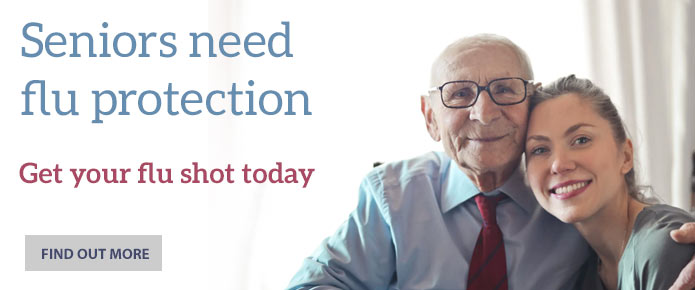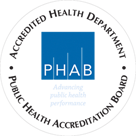Trisomy 13, known as Patau Syndrome, is a rare condition resulting from genetic errors on the 13th chromosome. This disorder causes severe intellectual and physical problems in most infants.
Trisomy 13 occurs when children have three copies of chromosome 13 instead of two. The disorder occurs in approximately 1 in 16,000 live births and much more commonly affects females than males. The severity of the impact of Trisomy 13 on development varies.
Information in Spanish Information in Vietnamese
About Trisomy 13
Impact on Development
Children with Trisomy 13 often have craniofacial defects such as cleft lip and palate, congenital heart defects, and abnormalities of the brain and spinal cord. Infants may also have eye defects which may result in unusually small eyes, more than the normal number of fingers and/or toes, kidney defects, and decreased muscle tone.
In addition, children with Trisomy 13 experience significant developmental and intellectual disabilities. Some children may also have vision or hearing impairments.
Clinical Course and Life Expectancy
Infants with Trisomy 13 are unusually small and have feeding difficulties which affect growth and development. They often experience significant health issues with feeding and breathing.
It is hard to predict how long a child with Trisomy 13 will live. Half of babies born with Trisomy 13 live longer than two weeks and only 10% – 20% will survive the first year of life. Approximately 13% survive until 10 years of age.
For More Information
- National Library of Medicine: Trisomy 13 Medline
- Genetic and Rare Diseases: Trisomy 13 NIH
- National Organization for Rare Disorders: Trisomy 13
Treatment Options
Although there is no cure for Trisomy 13, children may receive treatment to manage their specific symptoms and health conditions based on the decisions of their medical team and family. Initial treatment focuses on stabilization and survival. Some families may opt to focus on palliative or hospice care. Treatment may include surgical procedures, depending upon the nature and severity of the abnormalities and associated symptoms as well as the joint decision of families and medical professionals. Surgeries may be postponed until after the first few months of life due to the increased risk of early death associated with Trisomy 13.
Children with Trisomy 13 who are less medically fragile may receive more developmental services including physical therapy, medical, and social services to maximize their functioning and provide the best quality of life possible. Families of children diagnosed with Trisomy 13 may also benefit from genetic counseling.
Trisomy 13 Resources
Resources for Families
First-Call Programs and Trisomy 13 Hotline
- The Genetic and Rare Diseases Information Center (GARD) is funded by the National Institutes of Health (NIH) and provides access to current, reliable, and easy-to-understand information about rare or genetic diseases in English or Spanish. Call 1-888-205-2311 for information.
- Chromosome Disorder Outreach is a parent-formed organization for families of children born with rare chromosome disorders. CDO provides support and information, promotes research, offers an extensive library of available up-to-date articles to members, coordinates an Ask the Doctor program, and maintains a detailed database registry. CDO also offer families a chance to reach out 24 hours a day via Twitter, Facebook, YouTube, Pinterest and other social media sites.
Support Services
- Hope for Trisomy is made up of families of children with Trisomy 13, 18, and related conditions to fund research and promotes education. Hope for Trisomy also provides support and services to families and host events to raise awareness.
- The Mississippi Division of Medicaid provides access to health coverage for children with disabilities
Resource Centers or Clearinghouses
National and Local Organizations
- SOFT - Support Organization for Trisomy 13, 18, and Related Disorders is a network of families and professionals that promote parent-professional relationships and provide support to families in the diagnosis and care of Trisomy 13, 18, and other related chromosomal disorders.
Education and Support Programs
- Children and Youth with Special Health Care Needs (CYSHCN) offers Care Coordination services for children with special healthcare needs from birth through twenty-one years of age.
- First Steps Early Intervention offers services and supports according to an Individualized Family Service Plan for infants and toddlers with developmental delays.
- Perinatal High Risk Management/Infant Services System (PHRM/ISS) offers case management, enhanced access to health care, nutritional and psychosocial support, home visits, and health education for high-risk pregnant women and their babies less than one year old.
- PACER provides individual assistance, workshops, publications, and other resources to help families make decisions about education and other services for their child or young adult with disabilities.
Resources for Healthcare Providers
- Trisomy 13: Positive Cell Free DNA Screen ACOG
- Prenatal Diagnosis for Congenital Malformations and Genetic Disorders ACOGPractice essentials, invasive and non-invasive techniques
- Trisomy 13 Medscape
Prenatal Screening Counseling for Families
- Prenatal Genetic Screening Tests ACOG
- Genetic Disorders ACOG
- Prenatal Genetic Testing Chart ACOG
- 3 Questions to Ask Yourself Before Getting Prenatal Genetic Testing ACOG
General Resources
- A tumor profile in Patau syndrome (Trisomy 13). Daniel Satgé, Motoi Nishi, Nicolas Sirvent, Michel Vekemans, Marie-Pierre Chenard, et al. American Journal of Medical Genetics Part A, Wiley, 2017, 173 (8), pp.2088–2096. <10.1002/ajmg.a.38294>.<hal-01761514>
- Management Considerations for Ongoing Pregnancies Complicated by Trisomy 13 and 18. Dotters-Katz SK, Kuller JA, Grace MR, Laifer SA, Strauss RA. Obstet Gynecol Surv. 2016 May;71(5):295-300. doi: 10.1097/OGX.0000000000000304. PMID: 27182826
- Long-term survival of children born with congenital anomalies: A systematic review and meta-analysis of population-based studies. Glinianaia SV, Morris JK, Best KE, Santoro M, Coi A, Armaroli A, et al. (2020). PLoS Med 17(9): e1003356. https://doi.org/10.1371/journal.pmed.1003356;
- Trisomy 13 and 18-Prevalence and mortality: A multi-registry population based analysis. Goel N, Morris JK, Tucker D, et al. Am J Med Genet A. 2019;179(12):2382-2392. doi:10.1002/ajmg.a.61365
- The prevalence of selected major birth defects in the United States. Kirby RS. Semin Perinatol. 2017 Oct;41(6):338-344. doi: 10.1053/j.semperi.2017.07.004. PMID: 29037343 .
- The Care of Children with Congenital Heart Disease in Their Primary Medical Home. Lantin-Hermoso MR, Berger S, Bhatt AB, Richerson JE, Morrow R, Freed MD, Beekman RH. Pediatrics 2017;140(5);e20172607;
- Perinatal Counseling Following a Diagnosis of Trisomy 13 or 18: Incorporating the Facts, Parental Values, and Maintaining Choices. Leuthner SR, Acharya K. Adv Neonatal Care. 2020 Jun;20(3):204-215. doi: 10.1097/ANC.0000000000000704. PMID: 31996562.
- The Individuals with Disabilities Education Act (IDEA) for Children With Special Educational Needs. Lipkin, P.H., Okamoto, J., and the Council on Children with Disabilities and the Council on School Health. Pediatrics 2015;136;e1650. DOI: 10.1542/peds.2015-3409;
- UpToDate: Evidence-based Clinical Decision Support provides the latest evidence and best practices for clinicians

